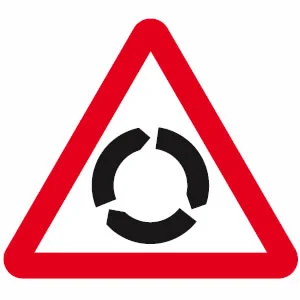Navigating Roundabouts Safely
Roundabouts are notorious for causing confusion, and in some cases accidents. This is because not everyone is familiar with the rules. If you’ve just passed your driving test, or you’re on the cusp of passing, then you probably know all the rules inside and out.
Unfortunately, however, there’ll be some people out there who don’t. It may have been a while since they last sat their test, and have perhaps forgotten about what they should be doing. There are also people out there who are simply poor drivers and don’t respect the rights and safety of others. It helps though if you remember the rules and stick to them and always be on the lookout for those who don’t look, indicate or are going in the wrong direction.
What Purpose Does a Roundabout Serve?
It’s easy to question what exactly roundabouts are for but initially they’re designed to keep traffic flowing smoothly. Traffic goes around on a clockwise basis around an island at the centre of a roundabout. When you’re about to enter a roundabout, you must always give way to traffic approaching from the right.
Watch Out For Hazards
By applying the Hazard Drill you can take care as you approach in the usual way, by making observations in the road ahead of you, and this gives you enough time to make a judgement about the flow of traffic. By making early assessments you can manage your speed and adjust it accordingly. It’s not a good idea to make your observations at the last minute, it could result in you making a mistake and causing an accident to other drivers.
Signal
If you’re going to turn left on a roundabout, then you will need to signal left and approach in the left-hand lane. If you’re going ahead use the left-hand lane unless instructed to do so otherwise by clearly marked signs on the road, don’t signal on approach and keep to your lane as you go around the roundabout. Signal left on leaving as you past the exit, before the one you’ll be taking. When turning right always approach from the right-hand lane and make a right signal. Maintain your position and signal left as you go past the exit before the one you’re going to take. If you’re going to change lanes because you’re leaving the roundabout make sure you take extra observations to the left before moving across.
Mini-roundabouts
You’ll find that rules regarding mini roundabouts are the same as for the normal ones, expect that reducing your speed is more important. You’ll have to go around the central markings and never do a U turn on a mini roundabout, but keep in mind that many drivers do.
On a double mini roundabout make sure you treat each roundabout the same as you would a normal one and treat them separately, and always give way to traffic coming from the right, making the usual observations.
On a complex mini roundabout, there’s a large roundabout with a series of smaller, mini ones. Again, treat them all separately, and watch out for traffic coming from both directions on the larger roundabout.
Compass Prodrive – Premier Driving Instructors in Edinburgh
If you need any further advice or guidance on what we’ve discussed today, get in touch and one of our driving instructors in Edinburgh will be more than happy to help you. Of course, if you’re out with your driving instructor, whether it’s one of ours or you’re with another school, ask him/her about roundabouts, and they should be more than happy to go through it with you carefully.

